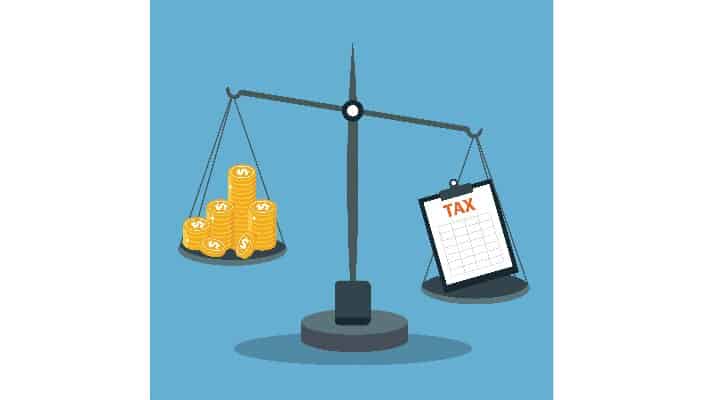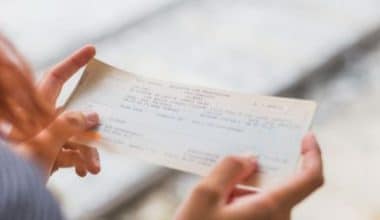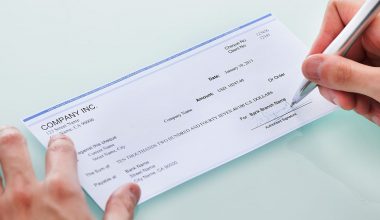You can claim the value of depreciation as a tax deduction if you own a business or rental property. If a company fails to account for asset depreciation, however, it might experience a significant reduction in profits. In this article, we’ll go over the basics of depreciation of rental property and its calculation for tax purposes.
What Is Tax Depreciation
Depreciation is the progressive reduction in the cost of a fixed asset throughout its useful life. It’s the amount you have to deduct to save the cost of an asset. Only tangible assets other than land that your company owns and utilizes for income. Producing operations have a determinable useful life, are likely to last longer than a year, and can also be depreciated. If these conditions are not met, the asset’s total cost must be charged for the period in which it was incurred. Tax depreciation is a way for corporations to write off depreciation as a cost on their tax returns. This permits businesses to save their funding on a selected asset.
Furthermore, tax depreciation, like accounting depreciation, spreads out deduction charges throughout many years. A company might invest $2,000 in a computer with a predicted useful life of five years. The value of a tangible asset depreciates over time. Some people age faster than others. When you attempt to resell the item, you’ll probably notice that you won’t get the same price as your initial payment for it. Depreciation is the term for this. You can claim the value of depreciation as a tax deduction if you own a business.
Tax Depreciation Deduction Calculation Method
Under generally accepted accounting principles (GAAP), a firm has many choices for calculating how much an asset depreciates to account for a tax deduction:
#1. Declining Balance
This strategy accounts for higher depreciation expenses in the early years of an asset’s life, while lower expenses are accounts for later years.
#2. Double-Declining
Greater tax depreciation is used in this calculation strategy. This method depreciates assets twice as quickly as the usual decreasing balance method. It also takes into account higher depreciation costs in the early years of an asset’s life and lowers costs later on.
#3. Sum-of-the-Years’ Digits
In this type of tax depreciation calculation, the project life of the asset is combined greater than the number in the first year, each year is divided by that value.
#4. Units of Production
When businesses utilize this strategy, they get more deductions. This is because an asset’s worth is determined by the number of units it produces rather than the number of years it is used.
#5. Straight-Line Method
This is the most popular method of tax depreciation calculation. The real difference between the asset’s cost and the estimated replacement cost is divided by the total number of years a firm plans to use it to compute the value.
Normally, companies typically use a method called straight-line for tax depreciation calculation; their method divides the asset’s acquired cost by its years of useful life. This is also a book depreciation because it is only for the company’s records. Things get more complicated when it comes to tax depreciation deduction calculation. You can calculate your tax depreciation deduction effectively with just a little information and guidance.
Also, determine the convention of your asset. When an item is placed into service and can be depreciated, it is said to be a “convention.” The mid-month convention assumes that the asset is installed or decommissioned in the middle of the month. The mid-quarter convention assumes that the property in question is put into service in the middle of the quarter. If you buy an asset in January and use mid-quarter accounting, the asset will start depreciating in February, which is the precise middle of the quarter.
The half-year convention provides for depreciation for the first half of the year. Tables based on the convention are provided in IRS Publication 946 to assist in calculation. Utilize the above components, for your tax depreciation deduction calculation. If your asset is a computer, you’ll need GDS and IRS Publication 946.
Using MACRS to Record Tax Depreciation on any Return
If your business assets have a useful life of one year or more, you must calculate depreciation using the modified accelerated cost recovery scheme, or MACRS. However, MACRS eliminates the guesswork in determining how long you can depreciate your property and how much you can claim on your tax return.
In addition, to determine the method of depreciation under MACRS, there are three basic depreciation methodologies using GDS. The straight-line approach, the 200 percent declining balance method, and the 150 percent declining-balance method are the three options. The Tables in IRS Publication 946 might assist you in figuring out the type of depreciation to apply based on the useful life class of your property. A computer, for example, is a five-year asset that would depreciate at 200 percent. The straight-line approach is in use by ADS.
Understanding Tax Depreciation on Rental Property
Buying a tax depreciable rental property can provide a variety of cash and tax benefits. Rental property under tax depreciation generates a consistent cash stream. Deductions for costs like insurance, property taxes, and property maintenance can reduce the tax owing on rental income. Real estate also tends to appreciate, so you might be able to sell for a profit.
The IRS expects a residential rental property to last 27.5 years in 2020. The property wears down or depreciates throughout that period, at least in terms of tax returns. If you’re a real estate investor, you can deduct 3.636 percent (100 percent/27.5 years) of the property’s cost basis from your taxable income each year.
Importance of IRS Provisions for Landlords on Tax Depreciation
Before thinking you’ll be able to take advantage of depreciation, make sure you meet the IRS’s requirements:
- You can’t deduct the cost of a property you lease and subsequently sublet. However, even if you have a mortgage on a home, you own it according to the IRS.
- Rent is the most common way for a property to generate revenue. Although the entire house can’t be written off, parts of it, such as a home office, may generate income and qualify for the deduction.
- The property must be occupied for at least a year. You can’t write off a rental property that you acquire and sell in the same year, say by renovating and flipping it.
Calculating a Rental Property’s Cost Basis
The cost basis is the estimated value of an asset subject to depreciation. This isn’t just the cost of the item. It is the final price after all necessary deductions and extras. The cost basis may need to be changed after purchasing a property. For instance, if you spend $50,000 to repair or modify a property, the cost basis will increase by $50,000.
Buildings, not the ground on which they sit, are eligible for depreciation write-offs because land does not normally lose value due to wear and tear. When calculating the cost basis of a rental property, it is necessary to deduct the value of the land. An example: if you purchase a home for $250,000, and an appraisal determines that the land it sits on is worth $50,000, then the cost basis is $200,000.
The cost basis will typically adjust over time. If after you have owned the property for several years. If you decide to spend $50,000 repairing or renovating it, that figure will be added to adjust the cost basis.
The Useful Life of a Rental Property on Tax Depreciation
For tax purposes, the IRS assumes that residential properties have a determinable useful life of 27.5 years and commercial properties, 39 years. That means that each year the depreciation expense for residential property is 3.636%, while it’s 2.564% for commercial properties.
Example of rental property depreciation
To use the figures above, a residential rental property with a cost basis of $200,000 would have an annual depreciation expense of $7,273. A commercial property with the same cost basis would have a depreciation expense of $5,128.
If you are in the 22% tax bracket, to pick one example, the depreciation expense on a rental property with a cost basis of $200,000 would lower your tax bill by $1,600. The annual tax savings due to the depreciation expense on a commercial property with the same cost basis would be $1,128.
Rules for Tax Depreciation on Rental Property
A rental property’s components, however, can’t depreciate. Because the value of land or a parcel of land does not deteriorate, it can’t depreciate. Regular operating costs, such as property management fees, regular maintenance, and property tax, also can’t depreciate. Rather, the deduction will be from total rental income in the year in which they occur. Several conditions are in IRS Publication 527 that need accomplishment in order to depreciate rental property:
#1. You Must Own the Property
To generate income, you must rent a property out. Land’s useful life must be determinable because it is never decreasing factor.
#2. Property Must Have a Useful Life of More Than One Year
Because the property is owned for less than a year, fix-and-flip investors are unable to depreciate it. Because wholesalers never take actual possession of the real estate they’re selling, they can’t claim a depreciation deduction.
#3. Some Items Depreciate Faster
Some renovations to your rental property can depreciate faster than 27.5 years, according to the IRS. Appliances, for example, may be a discount over five years, whereas improvements such as a road or fence may depreciate over 15 years. You can keep a separate depreciation schedule for each improvement if you want, or simply add the worth of items like appliances or a new fence to your overall costs basis, which we’ll go over next.
How to Calculate Your Cost Basis on Rental Property
The price you paid for the property plus any additional expenses make up your cost basis. The cost basis utilized for depreciation purposes does not include the value of the lot or land, unlike market value. Because land, at least according to the IRS, is not susceptible to wear and tear, it is not depreciable.
Your beginning cost basis is $130,000 if you paid $150,000 for a rental property in a local subdivision with a $20,000 lot value. You should also include any additional permissible costs, such as closing fees or renovations. Remember that the larger your cost basis, the higher your non-cash annual depreciation charge will be and the lower your taxable income.
Common Improvements Made to Rental Property
Items that increase the property’s value or utility, or restore it to a new or like-new state, may include:
- Adding a new structure to your home, such as a garage or converting an attic into a studio apartment.
- installation of A new HVAC or electrical system
- Adding carpeting or other types of flooring to the entire room.
- Adding a wheelchair ramp or paving the driveway to make the house more accessible.
Example of Calculating Residential Rental Property Depreciation
Depreciation on a residential rental property calculation goes with the following formula:
Building value = purchase price minus land value
Annual permitted depreciation = building value / 27.5 years
As an example, consider a $150,000 single-family rental home. The lot’s land value is $20,000 and you invested $5,000 in capital upgrades when you bought it. The following is your annual depreciation expense:
$150,000 purchase price minus $20,000 in land value equals $130,000 in building value plus $5,000 in improvements.
Depreciation expense per year = $135,000 ($130,000 building value + $5,000 renovations) / 27.5 years = $4,909 per year.
How Depreciation Helps Minimize Taxable Net Income
Let’s take a look at the significant advantage that depreciation expense provides real estate investors. Depreciation is a non-cash deduction based on the assumption that a residence will wear out or degrade over 27.5 years.
If your single-family rental earns $18,000 in annual gross rent and your total operational expenses, which include things like property management, normal maintenance and repairs, interest expense, and property tax, account for 50% of your gross income, your annual net income is $9,000. Our taxable income, however, is less than half of that, thanks to the benefit of depreciation. Before depreciation, $18,000 total annual income minus $9,000 operational expenses is $9,000. $4,091 taxable income minus $9,000 non-cash depreciation expense
Even though we still have a cash profit of $9,000 in this example, we only have to pay taxes on about half of it. If you’re in the 32 percent tax bracket, the depreciation expense on your single-family rental home has likely saved you $1,571 in federal income tax alone.
Ultimately, depreciation helps rental property investors significantly lower and sometimes eliminate taxable income. The IRS considers residential property to wear out or depreciate over 27.5 years. Major improvements, such as a new roof or HVAC system, can increase the cost basis for depreciation. The larger the cost basis, the greater the annual depreciation expense will be. Of course, before you can reduce your taxable income, you’ll want to find a rental property to depreciate.
What is difference between book and tax depreciation?
The amount of depreciation that a taxpayer claims as a deduction on their tax return for a specific tax year is referred to as “tax depreciation.” The cost incurred by a business for the use of a fixed asset over the asset’s useful life is called book depreciation.
What is the use of tax depreciation?
Tax deductions for depreciation are permitted for both residential and commercial investment buildings. In the same manner as other property expenses, such as borrowing costs, property management fees, repairs and maintenance, etc., the deduction is used against the property’s income.
What is the purpose of depreciation on tax?
Depreciation is a technique used to distribute a portion of the cost of an asset to periods during which the tangible assets contributed to revenue generation. The amount of taxable earnings is decreased by a company’s depreciation expense, which lowers the amount of taxes due.
What is tax depreciation called?
The straight-line technique, sometimes referred to as the simple depreciation method or the prime cost depreciation method, determines the decline in value of an asset during its useful life at a predetermined rate each year.
What are 2 different types of depreciation?
The four basic depreciation techniques are straight line, twofold decreasing, years’ digits total, and units of production. Each technique is used to various business and asset categories.
FAQs
How does depreciation work on taxes?
Depreciation reduces the amount of taxes a company or business pays by charting the decrease in the value of an asset or assets.
How much depreciation can I claim?
Most residential rental property in the United States is depreciated at a rate of 3.636 percent each year over a period of 27.5 years. Land cannot be depreciated; only the value of structures can be deducted.
What is the difference between accounting and tax depreciation?
The main distinction between accounting depreciation and tax depreciation is that accounting depreciation is calculated using accounting principles, whereas tax depreciation deduction is calculated using IRS standards.






